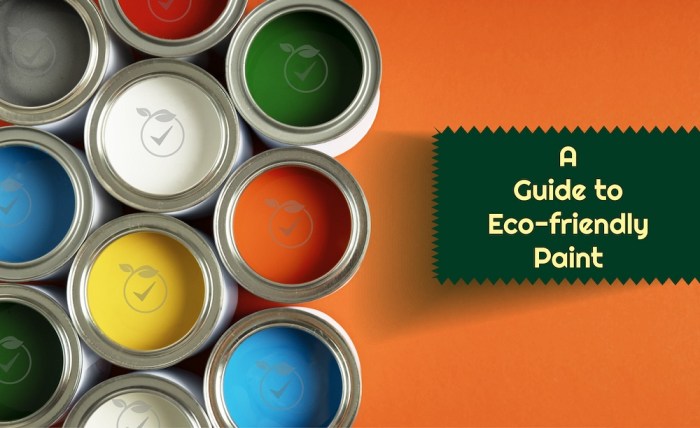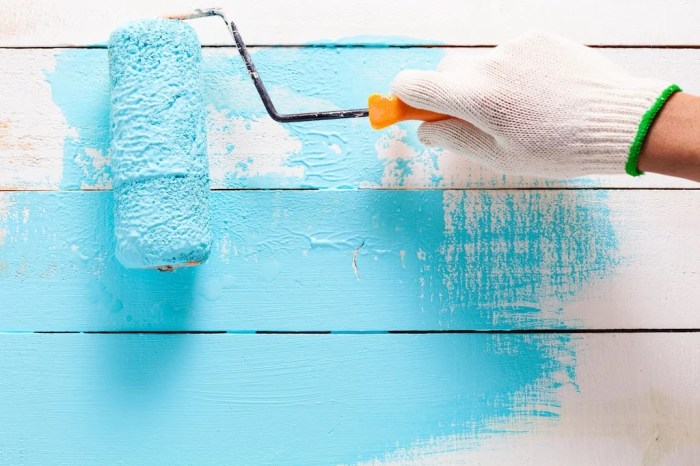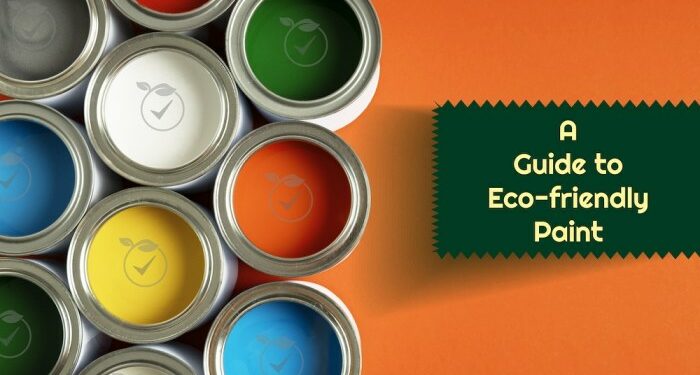Embark on a journey through the world of eco-friendly house paint options, where sustainability meets style. From natural paint choices to reducing environmental impact, this guide covers it all.
Learn about the different types of eco-friendly paints, their features and benefits, application tips, and cost comparisons to make an informed decision for your next painting project.
Types of eco-friendly house paint options
When it comes to eco-friendly house paint options, there are several choices available in the market. From natural paint options to plant-based paints, there are plenty of alternatives to traditional paints that are better for the environment.
Natural Paint Options
- Clay Paint: Made from natural clay and mineral pigments, clay paint is a breathable option that helps regulate humidity levels in a room.
- Chalk Paint: Chalk paint is known for its matte finish and can be easily distressed for a vintage look. It is often used for furniture and decorative purposes.
- Lime Wash: Lime wash is made from natural lime and offers a unique, textured finish that is breathable and mold-resistant.
- Milk Paint: Made from milk protein, lime, and natural pigments, milk paint is a non-toxic option that has been used for centuries.
Plant-Based Paints
- Soy Paint: Soy paint is made from soybean oil and offers a durable and low-odor option for painting walls and furniture.
- Citrus Paint: Citrus paint is made from citrus extracts and has a fresh, citrus scent. It is a great option for those looking for a natural and eco-friendly paint.
- Linseed Oil Paint: Linseed oil paint is made from flaxseed oil and offers a durable and long-lasting finish that is also biodegradable.
Differences in VOC Levels
When choosing eco-friendly paint, it's important to understand the differences in VOC levels:
Low-VOC: Contains lower levels of volatile organic compounds, making it a better option for indoor air quality.
Zero-VOC: Contains no volatile organic compounds, ideal for those looking for a completely non-toxic option.
VOC-Free: Completely free of volatile organic compounds, ensuring minimal impact on indoor air quality and the environment.
Features and benefits of eco-friendly house paints
Eco-friendly house paints offer a range of features and benefits that set them apart from traditional paints, making them a popular choice for environmentally conscious consumers.
Key Features of Eco-Friendly House Paints:
- Low VOC (Volatile Organic Compounds) content
- Natural and non-toxic ingredients
- Biodegradable and sustainable materials
- Low odor during and after application
Benefits of Using Eco-Friendly Paints:
- Improves indoor air quality by reducing harmful emissions
- Promotes a healthier living environment, especially for individuals with allergies or respiratory conditions
- Reduces environmental impact by minimizing pollution and waste
- Contributes to sustainable practices and support for eco-friendly initiatives
Certifications and Labels for Eco-Friendly Paints:
When choosing eco-friendly paints, look for certifications and labels such as:
- Green Seal
- ECOS Paints
- Cradle to Cradle
- LEED (Leadership in Energy and Environmental Design)
Application and durability of eco-friendly house paints

When it comes to applying eco-friendly house paints, the process is quite similar to conventional paints. However, there are some special considerations to keep in mind. Eco-friendly paints are typically water-based, so it is important to ensure the surface is clean, dry, and free of any contaminants before applying the paint.
It is also recommended to use brushes and rollers made from sustainable materials for a more environmentally friendly application process
Durability and Longevity
Eco-friendly house paints are known for their durability and longevity, often outperforming conventional options. These paints are resistant to cracking, peeling, and fading, making them a great choice for high-traffic areas. With proper application and maintenance, eco-friendly paints can last for years without the need for frequent touch-ups or repainting.
Maintenance and Care
To maintain surfaces painted with eco-friendly paints, it is important to clean them regularly with a mild detergent and water. Avoid using harsh chemicals or abrasive cleaners, as they can damage the paint finish. In case of any stains or marks, gentle scrubbing with a soft sponge should suffice.
Regular maintenance will help preserve the appearance and integrity of the paint for years to come.
Resistance to Mold, Mildew, and Fading
Eco-friendly house paints are naturally resistant to mold and mildew growth, thanks to their low VOC content and non-toxic formula. This makes them an ideal choice for areas prone to moisture, such as bathrooms and kitchens. Additionally, eco-friendly paints are formulated to resist fading caused by UV exposure, ensuring that your painted surfaces retain their vibrant colors for longer periods.
Cost comparison and availability of eco-friendly house paints

When it comes to eco-friendly house paints, one of the common concerns is the cost in comparison to traditional paints. Let's explore the affordability and availability of these environmentally conscious painting options.
Cost Comparison with Traditional Paints
While eco-friendly paints may have a slightly higher upfront cost compared to traditional paints, the long-term benefits and savings they offer can outweigh the initial investment. These paints are often more durable, have low volatile organic compound (VOC) levels, and can improve indoor air quality, making them a cost-effective choice in the long run.
Tip: Consider the overall value and benefits of eco-friendly paints when comparing costs with traditional options.
Availability of Eco-Friendly Paint Options
Eco-friendly paint options are becoming more widely available in both local stores and online retailers as the demand for sustainable products grows. Many major paint brands now offer eco-friendly lines, making it easier for consumers to access these environmentally friendly choices.
Cost-Effective Ways to Source Eco-Friendly Paints
- Look for sales or discounts on eco-friendly paints to save on costs.
- Consider buying in bulk or opting for larger containers to lower the cost per unit.
- Explore local paint stores or online marketplaces for competitive pricing and deals on eco-friendly paint products.
DIY Eco-Friendly Paint Recipes
For those looking to save even more money and customize their paint colors, DIY eco-friendly paint recipes are a great option. By using natural ingredients like clay, milk, or plant-based pigments, you can create your own non-toxic and sustainable paints at home.
Ultimate Conclusion
In conclusion, eco-friendly house paint options offer a greener alternative without compromising on quality. Make the switch to sustainable paints for a healthier home and planet.
FAQ Resource
Are eco-friendly paints more expensive than traditional paints?
Eco-friendly paints can be slightly more expensive upfront, but they often provide better coverage and durability, making them a cost-effective choice in the long run.
How do eco-friendly paints contribute to indoor air quality?
Eco-friendly paints release fewer harmful chemicals into the air, improving indoor air quality and reducing health risks associated with traditional paints.
Can I find eco-friendly paint options in local stores?
Many home improvement stores now carry a variety of eco-friendly paint options. You can also explore online retailers for a wider selection.
Do eco-friendly paints come in different finishes?
Yes, eco-friendly paints are available in various finishes like matte, satin, and gloss, offering versatility for different surfaces and preferences.
Are there any DIY eco-friendly paint recipes I can try?
Absolutely! You can create your own eco-friendly paints using ingredients like clay, flour, and natural pigments. Look up recipes online for fun and eco-conscious painting projects.











